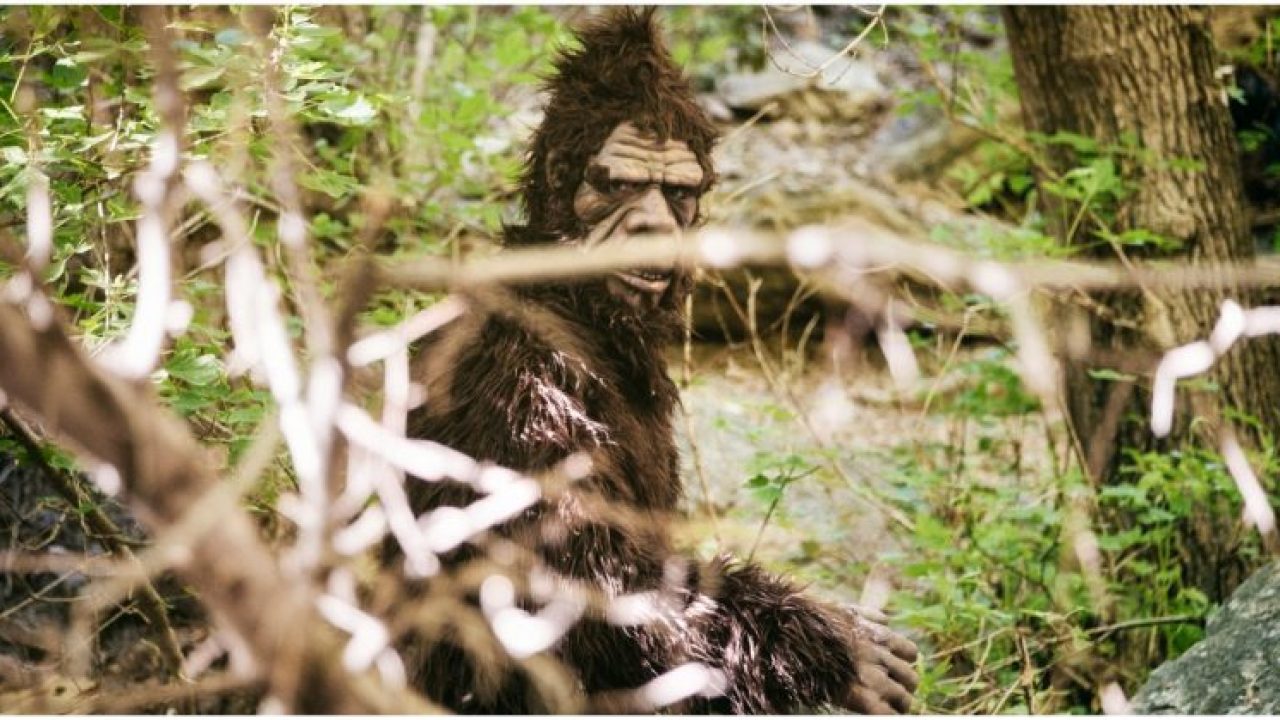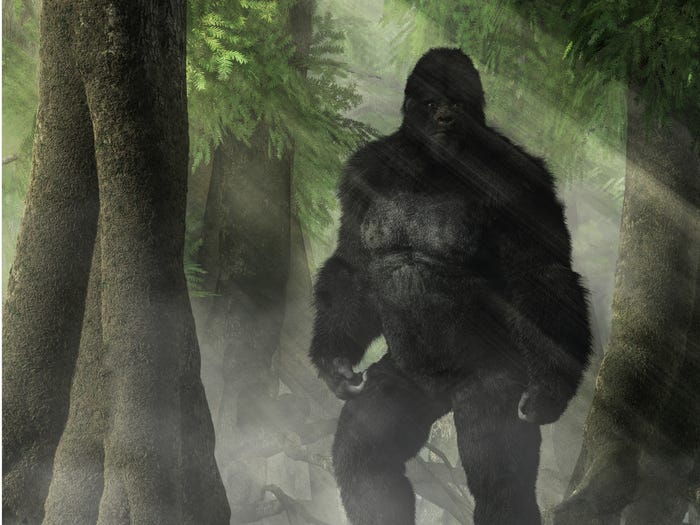Vietnam Rock Apes: Myth, Fact and Everything In-Between
Is the Vietnam Rock Ape a myth, a hard fact, or somewhere in between? Decide for yourself…

Alfonso Villareal, nicknamed “Pancho,” served in the 3rd Battalion, Fifth Marines in the Vietnam War. Like anyone else who was sent over, Alfonso went through hell and back fighting in the humid jungles of Southeast Asia.
He believed the only encounters he would have would be the communist Vietnamese counter-insurgency. But as time passed…he saw more than what meets the eye.
One night while his platoon was resting, all of them began to observe an object the size of a small medical ball rolling at them.
The medical ball kept moving until it was pressed up on the end of a rifle. One of Alfonso’s platoon members tapped the object.
The “thing” unfolded, and started to scream and holler, waving its arms all over and running away.
“It was a baby rock ape,” Villarreal said.

Vietnam Rock Apes History
The Vietnam Rock Apes and their existence are presented as an exaggerated case of mistaken identity – or so we assume. They are classified under the category of cryptids, which are specimens whose existence have not been verified by the greater scientific community at large.
Mistaken repeatedly for the yeti, Bigfoot or even an orangutan, to this day it hasn’t been determined whether or not the mythical beast sighted by young men who served as soldiers in the Vietnam war was fact or fiction.
In Vietnamese folklore, these apes are seen as akin to the Batutut (also “Ujit,” or “Người rừng,” which loosely translates as, “jungle people.”)
The Batutut is believed to have resided in the Vu Quang nature reserve and the broader wilderness in Vietnam and Laos. By what is documented, they are covered with hair except in the knees, the soles of the feet, the hands, and the face. Often rummaging for food like from fruits and leaves to langers and even flying foxes, the Batutut is a stocky traveler that has a daunting build that can only be visualized.

According to the first-hand accounts of what was seen, the Rock Apes, (who got their name from throwing rocks…go figure) were described in behavior or appearance as a “ape-like humanoid”. Not exactly half-man, half-beast, but as close as genetically possible to that.
Lathered in some hue of brown hair with the exception of a few areas, they were reportedly very muscular, with their frame completed by long limbs and protruding hips. This was complimented with dark eyes, a cucumber-shaped head, 4-to-5-inch fangs and a tail attached to their backside.
Multiple sources dispute the average height of the creature. Some say they were about six feet, but nothing to this day has been confirmed. That didn’t stop their presence in the dead of night from replicating “ghostly images” in the eyes of soldiers who witnessed them in the flesh.
Some footprints collected over the decades assert the Vietnam Rock Ape to be bigger than a human being, but smaller than the composition of an actual, regular ape.
Communicating with them would’ve been impossible as eyewitness reports stated that they delivered a wide range of vocalizations, the range varying from the minimum of eerie cries and barks to the maximum of heavy jowls and beyond. This is according to certain opinions; others juxtapose that claim with the counterclaim that the rock apes didn’t communicate much at all.
All these attributes to some degree aggregate to enough evidence to assume that the Vietnam rock apes could’ve just one of numerous associated animals.

From the get-go, a comparison to the orangutan is made because Vietnam Rock Apes had ginger hair from head to toe. However, for thousands of years now orangutans were extinct in Vietnam. Additional doppelgangers to the Vietnam Rock Ape brought up include the white-cheeked gibbon and the Tonkin snub-nosed monkey.
The white-cheeked gibbon lives in tight-knit circles like the Rock Apes, and high above in the trees, but they’re significantly smaller than the Rock Apes are purported to be.
On the other side of the divide – Vietnamese forces, villagers and troops had their fair share of run-ins with the enchanting critters.
Native expeditions in Vietnam were launched in order to scout out for the Vietnam Rock Apes and see for themselves if the Americans knew what they were talking about. Unsuccessful expeditions were led by General Hoang Minh Tha and Professor Vo Quy of the Vietnam National University. Professor Trang Hong Viet from Hanoi’s Pedagogic University embarked upon another expedition and uncovered human-like footprints. Sequentially, in a lab he made casts of them afterwards.
One unifying detail in any description provided on the Vietnam Rock Apes were their strange demeanor. Unless it was in the heat of day, these apes would linger and stalk at night in packs. It’s easy to believe that they were actually apes.
Marines and soldiers alike revealed that in close contact, the apes didn’t demonstrate any fear. They didn’t scurry off like mice or cockroaches. If they were capable of it, soldiers or villagers even got a sneaky wake-up call by the stealth intrusion of a rock ape into their personal space, taking a seat right next to them. Reasons given for this brazen fearlessness approximated to either their large size giving them a physical advantage over humans, and the remote environment they lived leaving them immune to the inclusion of foreign travelers.

Often like humans do, the rock apes would vent via yelling and shake their fists to accentuate their anger. The rock apes exhibited behavior like a erratic toddler or lawless youth committing gang violence as setting fires were blended into their repertoire for dealing with friend or foe.
Speculation draws the reasonable conclusion that the concoction of these mythical Tarzan-like beasts all boils down to a figment of the young, scared, and vulnerable soldiers’ imagination. Thrown into the heightened melodrama of war, traumatic disassociation from reality is a plausible coping mechanism for one’s pain. In order to de-load and de-stress, it’s suggested that many soldiers sporadically engaged with marijuana and LSD.
Conspiracy theories farther off the deep end raise the possibility that the Vietnam Rock Apes are anything from aliens, a government-sponsored genetic experiment to a part of a multi-dimensional species to a “prehistoric based evolution” of human or ape.
Southeast Asia’s erratic climate washes out a lot of the roads that intertwine with the dense Vietnamese jungle. Plus, to this day there remains countless landmines and bombs that haven’t set off yet, inadvertently helping the rock apes (Batutut) remain isolated.
From an excerpt in K.K. Jorgensen’s book Strange but True Stories of the Vietnam War about the 101st Airborne Division:
“The purported cryptid wasn’t taller than 5 feet and it walked upright. It stopped, looked at them as though scrutinizing each and one of the soldiers.
“What the hell is that?”, one of the soldiers recalls muttering.
“It’s a rock ape”, said another.
“No, it ain’t”, a third man said.
“I’ve seen rock apes, and that sure as hell isn’t a rock ape!”
The warriors didn’t take their eyes off the creature.
“It’s an orangutan, isn’t it?”, asked the first soldier again.
“Well, if it is, then he can’t read a map. There are no orangutans in Vietnam.”
Whatever the truth is, the Vietnam Rock Ape and its legacy lingers in the shadows of public opinion.

